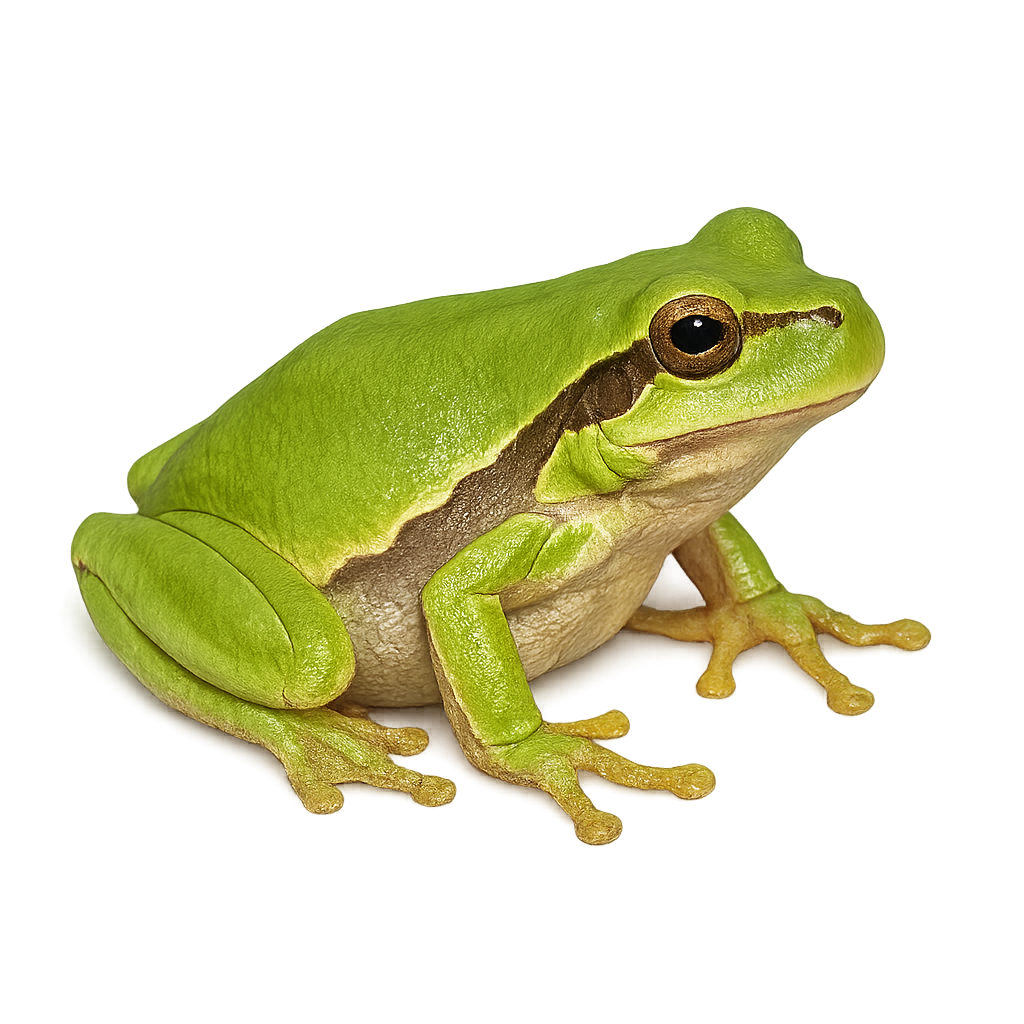Your wildlife photography guide.
Explore the european tree frog in detail, study its behavior, prepare your shots.
Where to observe and photograph the european tree frog in the wild
Learn where and when to spot the european tree frog in the wild, how to identify the species based on distinctive features, and what natural environments it inhabits. The WildlifePhotographer app offers tailored photography tips that reflect the european tree frog’s behavior, helping you capture better wildlife images. Explore the full species profile for key information including description, habitat, active periods, and approach techniques.
European Tree Frog
Scientific name: Hyla arborea

IUCN Status: Least Concern
Family: HYLIDAE
Group: Amphibians
Sensitivity to human approach: Tolerant
Minimum approach distance: 2 m
Reproduction period: N/A
Incubation: N/A
Births: N/A
Habitat:
Forests, marshes, wet meadows
Activity period :
Mainly active at night, generally discreet during the day.
Identification and description:
The European Tree Frog, or Hyla arborea, is a small arboreal frog native to Europe. It is characterized by its smooth skin and bright green color, although some may exhibit shades of brown or gray. Typically measuring between 3 and 5 cm, it has adhesive pads on its fingers, allowing it to climb easily on plants and trees. It is often found near stagnant water bodies, such as ponds and marshes, where it breeds. Its call, a loud croak, is particularly noticeable during the breeding season. Although primarily nocturnal, it can be seen basking in the sun during the day.
Recommended lens:
Macro – adjust based on distance, desired framing (portrait or habitat), and approach conditions.
Photography tips:
To photograph the European Tree Frog, focus on twilight or nighttime hours, as it is more active then. Use a macro lens to capture the details of its smooth skin and adhesive pads. Approach slowly to avoid startling it, and maintain a distance of about 2 m. A tripod can be helpful to stabilize your camera in low-light conditions. Try capturing its reflection in the water for an artistic effect.
The WildlifePhotographer App is coming soon!
Be the first to explore the best nature spots, track rutting seasons, log your observations, and observe more wildlife.
Already 1 430 wildlife lovers subscribed worldwide

